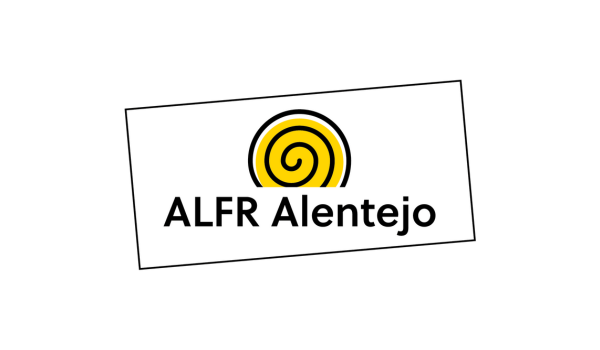The Évora Molten Salt Platform (EMSP) aims at the development of applied research in molten salt-driven CSP, SHIP and thermal energy storage components, systems and technologies.
Is jointly managed and operated by the Renewable Energies Chair of the University of Évora and the German Aerospace Center (DLR, Deutsches Zentrum für Luft- und Raumfahrt).
- Objectives -
As a publicly funded research infrastructure, EMSP aims at providing researchers, industry and academia the means to conduct research aiming at the development of innovative products and components, the support to standardization activities and the backbone training to technicians suiting the molten salt-driven CSP, SHIP and thermal energy storage components, systems and technologies.
Applied Research
Applied research on solar concentrator optics, molten salt hydraulics, optimal O&M strategies, durability of components.
Industrial services
Testing of components, product development, standardization.
Capacity building
Support to post-graduates studies, technical training,site visits.
- Technologies -
As a publicly funded research infrastructure, EMSP aims at providing researchers, industry and academia the means to conduct research aiming at the development of innovative products and components, the support to standardization activities and the backbone training to technicians suiting the molten salt-driven CSP, SHIP and thermal energy storage components, systems and technologies.
Solar Collector Technologies
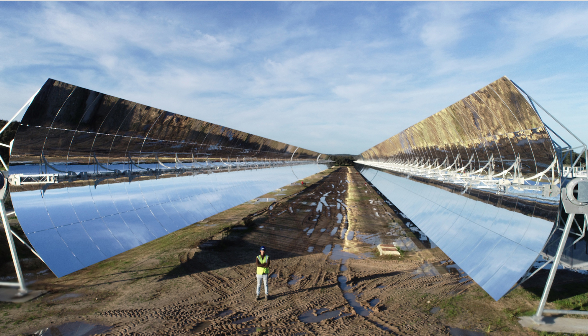
HelioTrough Parabolic Trough Collector:
At the EMSP, TSK Flagsol has installed the second generation of the large-aperture parabolic trough collector: HelioTrough® 2.0. The molten salt loop is heated by four of these collectors, having a total length of 684 m and an energy collection area of more than 4,500 m². Under ideal conditions this is enough to generate up to 3,500 kW of power.
The collector technology is characterized by a continuous torque tube, rendering the collector stiff and precise. Each collector with 19-m-long elements has been manufactured in a field factory on site and lifted into place by cranes.
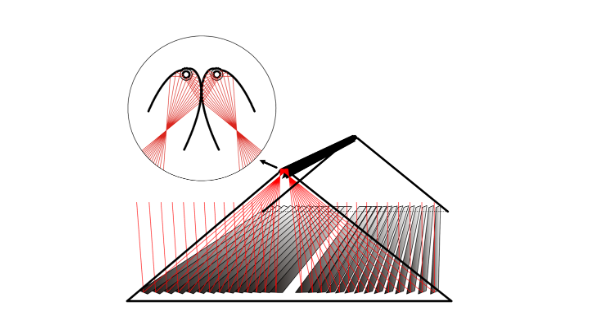
Advanced Linear Fresnel Reflector, ALFR-Alentejo:
The ALFR (Advanced Linear Fresnel Reflector) is a thermal solar concentrator with installed power of 270kWth and a mirror area of 440 m², with a peak concentration of 45 suns.
It includes an innovative asymmetric secondary mirror for an evacuated received tube with the possibility of placing two receivers on the same tower, achieving a higher compactness factor. It is designed to operate up to 560°C using molten salts both as heat transfer fluid and storage media.
Storage Technologies
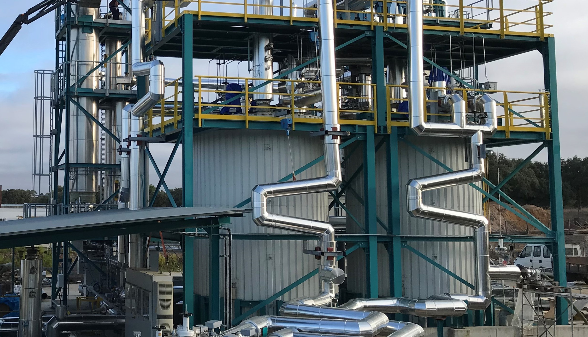
HPS2 Two-tank molten salts thermal energy storage
The design of the TES system fulfills three main objectives: first, storing hot molten salt in order to extend time of steam generation. Second, storing the salt to provide sufficient energy needed for the nightly antifreeze operation of the solar field and steam generating system. Probably the most interesting point of the TES in conjunction with the used once-through boiler type is the demonstration of total dispatchability of steam production as well as the ability of such a configuration to participate in the secondary control.
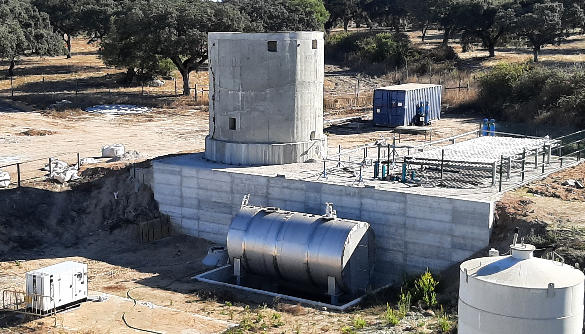
NewSOL Thermocline thermal energy storage tank
The NewSOL project thermocline tank has a volume of 28 m3 , with a height of 4.2 m and a diameter of 2.9 m. It is expected to store about 2.86 MWhth with the slags and about 3.6 MWh with molten salts only. Molten salts will be used as heat transfer fluid between a high-temperature of 500 °C and a low-temperature of 290 °C.
The tank is filled with mining slags in baskets, to get a packed-bed TES, with a 40% assumed porosity. After reaching a temperature of 500 °C, molten salts at 290 °C will be circulating through a cooling system with an estimated capacity of 500 kW and sent back to the leveling tank.
- Projects -
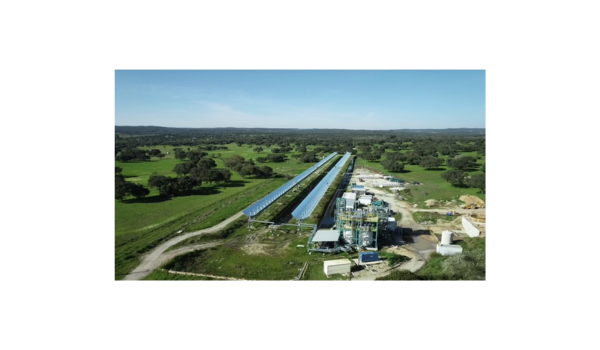
SPOT – Solar Preheating and Drainage
Funding: Federal Ministry for Economic Affairs and Climate Action
Duration: 2024 – 2027
Status: Ongoing

MSA-TROUGH
Funding: European Climate, Infrastructure and Environment Executive Agency (CINEA)
Duration: 2024 – 2027
Status: Ongoing
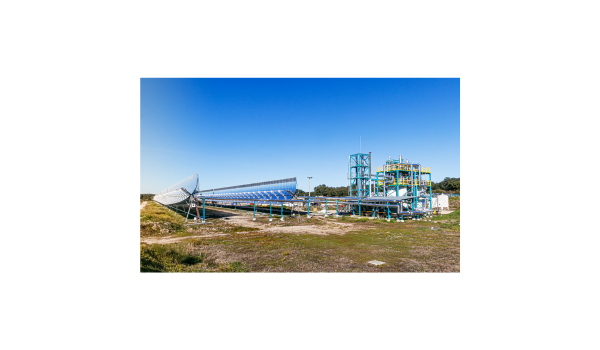
LHEXMS – Large Electric Heat eXchanger for Molten Salt
Funding: Federal Ministry for Economic Affairs and Climate Action
Duration: 2023 – 2027
Status: Ongoing
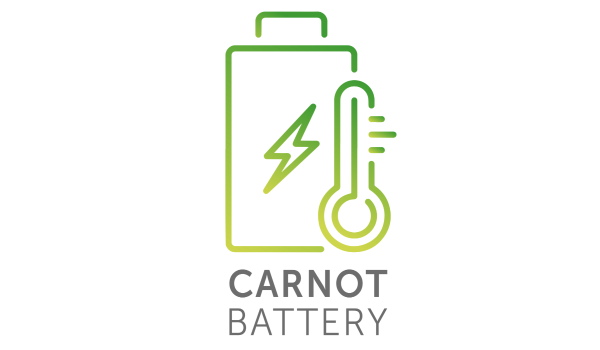
ATE – New Carnot Battery
Funding: NextGenerationEU – PRR
Duration: 2023 – 2025
Status: Ongoing
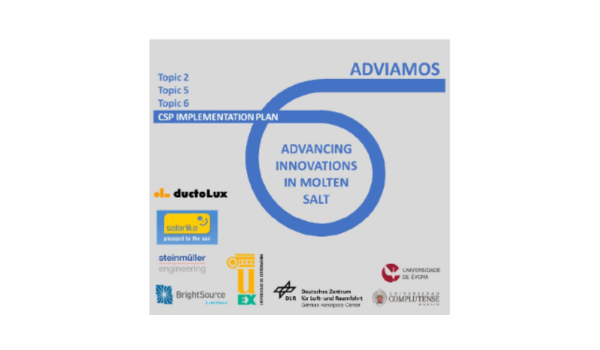
ADVIAMOS – Advancing Innovations in Molten Salt
Funding: Federal Ministry for Economic Affairs and Climate Action
Duration: 2022 – 2025
Status: Ongoing
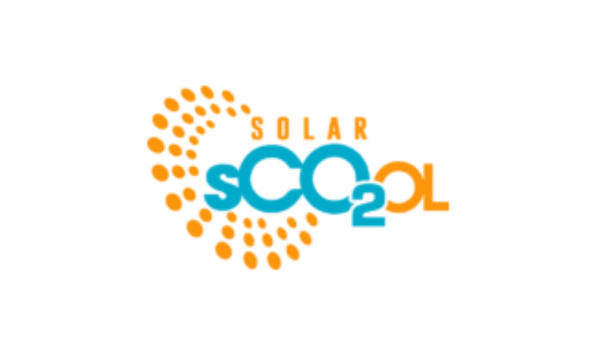
SolarSCO2OL – SOLAR based sCO2 Operating Low-cost plants
Funding: EU H2020
Duration: 2020 – 2025
Status: Ongoing
- Equipments -

MS-PTC Solar loop
Asset description: Large-aperture parabolic trough HelioTrough® 2.0. Total length of 684 m and an energy collection area of more than 4,500 m2.
HTF: Molten Salts
Status: Commissioned
Production power: 3.5 MW.th
Storage capacity: N/A

MS-2 Tank TES
Asset description: 2-Tank Molten Salt based Thermal Energy Storage. Total mass of 92 tons of salts. Volume of each tank = 34 m3.
Status: Commissioned
Production Power: N/A
Storage capacity: 4.4 MWh.th

MS-Thermocline NEWSOL
Asset description: Thermocline tank has a volume of 28 m3, with a height of 4.2 m and a diameter of 2.9 m. Molten salts will be used as heat transfer fluid between a high-temperature of 500 °C and a low-temperature of 290 °C. After reaching a temperature of 500 °C, molten salts at 290 °C will be circulating through a cooling system with an estimated capacity of 500 kW and sent back to the levelling tank.
Status: Built, pending of commissioning
Production power: N/A
Storage capacity: 2.86 MWh.th (MS w/ filler); 3.6 MWh.th (MS only)
- Services -

Characterization of molten salt mixtures thermal properties
Experimental measurement of thermophysical properties of small samples of molten salt mixtures.
Physical access to infrastructure: N
Estimated number of weeks available per year: 48
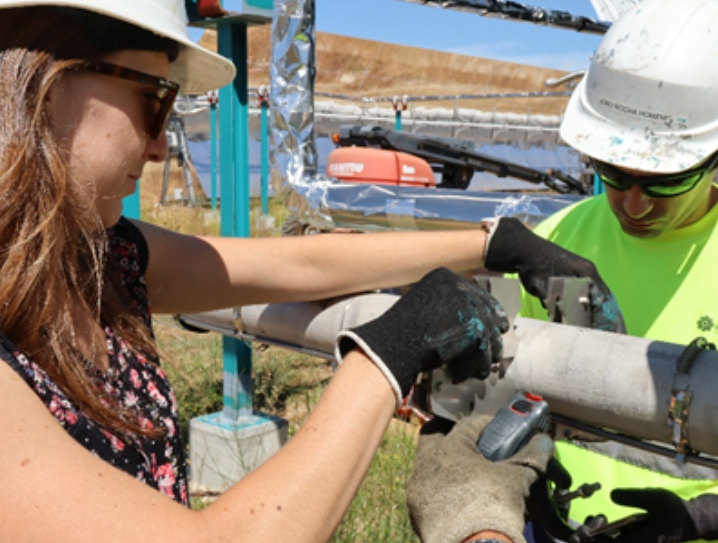
Cycling characterization of molten salt mixtures as HSM/HTF
Charging/discharging cycling tests, up to 500ºC, up to 3 MWh.th.
Physical access to infrastructure: N
Estimated number of weeks available per year: 48

